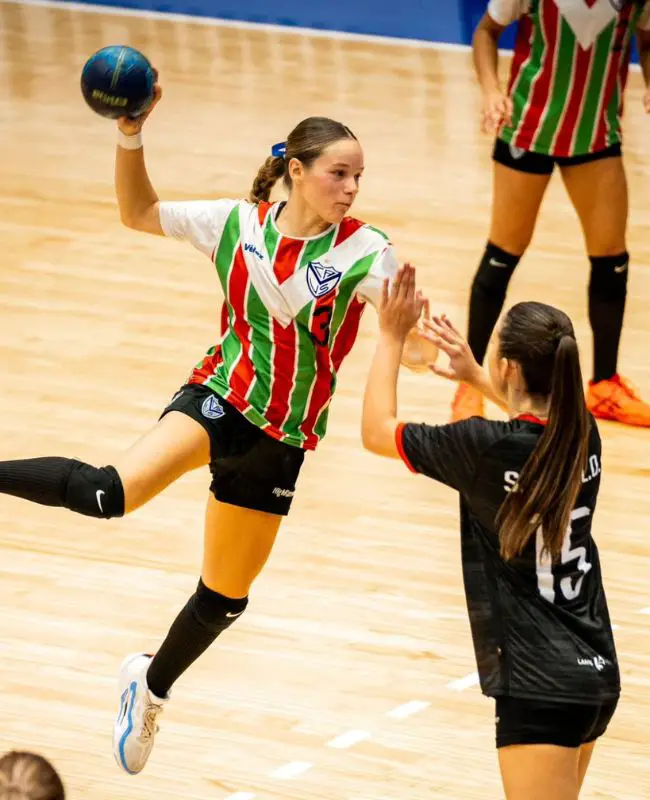Handball became popular in Europe due to its fast-paced and competitive nature, attracting a large and passionate fan base. The sport’s accessibility and straightforward rules have also contributed to its popularity across the continent.
Handball has gained widespread popularity in Europe, thanks to its fast-paced and competitive gameplay. The sport’s captivating nature has drawn a large and enthusiastic fan base. Its accessibility and simple rules have also played a pivotal role in its widespread appeal.
With its roots deeply embedded in European culture, handball has become a prominent and beloved sport throughout the continent. Countries across Europe have embraced the sport, fostering a robust and vibrant handball community. As a result, the sport continues to thrive, attracting fans, players, and enthusiasts alike.
Roots Of The Sport
Handball has deep roots, stretching back to ancient times. The sport has evolved significantly over the years and developed into a formalized game that is widely enjoyed in European countries. The influence of regional culture has played a pivotal role in shaping the popularity of handball.
Through its integration with local customs and traditions, handball has gained widespread recognition as a popular European sport. The sport’s historical origins and continued evolution have contributed to its enduring appeal, making it an integral part of the cultural fabric in many European nations.
Handball Become a Popular European Sport
Handball has experienced a rapid rise in popularity across Europe due to its rich history and exciting gameplay. The sport’s evolution can be attributed to its adaptability and resilience.
The aftermath of the World Wars saw an increase in participation, leading to a surge in interest and the establishment of national federations. In addition, the inclusion of handball in the Olympics further fueled its growth, providing a global platform for showcasing the sport.
The extensive media coverage and public interest have played a pivotal role in amplifying its appeal, generating widespread enthusiasm and support. This combination of historical significance, global exposure, and mass appeal has solidified handball as a beloved European sport.
Key Drivers Of Handball’s Growth
Institutional support and infrastructure: The strong foundation laid by European handball’s institutional support and infrastructure has played a pivotal role in the sport’s popularity. Investment in training facilities, coaching programs, and youth development initiatives has provided a solid framework for nurturing talent and promoting the sport at various levels.

National federations and governing bodies have actively contributed to the growth of handball by fostering a supportive environment for players and teams.
Influential players and role models: The emergence of influential players and role models has significantly contributed to the rise of handball as a popular European sport. The success and visibility of talented athletes have captured the imagination of fans and inspired a new generation of players.
Their achievements and charismatic presence have elevated the profile of the sport and garnered widespread attention.
The success of club competitions: The thriving success of club competitions has been a driving force behind the popularity of handball in Europe. Engaging and fiercely competitive tournaments have captivated audiences and created a strong sense of community and camaraderie among fans and players.
The high-stakes nature of these competitions and the intense rivalries have further propelled the sport into the spotlight, generating mass appeal and attracting a growing fan base.
Modern Handball Mania
Handball has grown exponentially in popularity in Europe in recent years, thanks to a myriad of factors that have contributed to its increasing appeal. One of the key drivers behind this surge is the significant technological advances that have made the sport more accessible to a broader audience.
Moreover, the advent of digital platforms has facilitated enhanced fan engagement and community building. This, in turn, has bolstered the sport’s presence and connectivity with its followers. Economic aspects have also played a pivotal role in elevating the sport’s profile, with lucrative sponsorship deals injecting substantial resources and support into its development.
The confluence of these elements has irrefutably propelled handball into the forefront of European sports, solidifying its status as a beloved and enduring pastime across the continent.
Grassroots Movements And Youth Programs
The popularity of handball in Europe can be attributed to various factors, including the emphasis on grassroots movements and youth programs. School programs play a vital role in nurturing new talent by introducing handball to students at an early age.
Additionally, grassroots campaigns across Europe have helped in promoting the sport and increasing participation. Handball clinics and local tournaments have also contributed to the sport’s popularity, providing opportunities for young athletes to develop their skills and passion for the game.
Challenges And Future Prospects
Handball has become a popular European sport due to several factors. Challenges and Future Prospects involve the sport competing with other popular sports, such as football and basketball. The potential for global expansion is an exciting prospect for the sport, as it opens up new markets and opportunities for growth.
Additionally, innovations and the modern athlete are shaping the future of handball, with advancements in training methods, equipment, and game strategies. The sport’s competitive nature and fast-paced gameplay have contributed to its rising popularity among both players and spectators.
Final Thoughts
Considering the history and cultural impact, it’s evident how handball gained popularity in Europe. The game’s fast-paced, adrenaline-inducing nature has captivated a wide audience and secured its place in European sports.
With strong community support and international recognition, handball continues to thrive and delight fans across the continent.